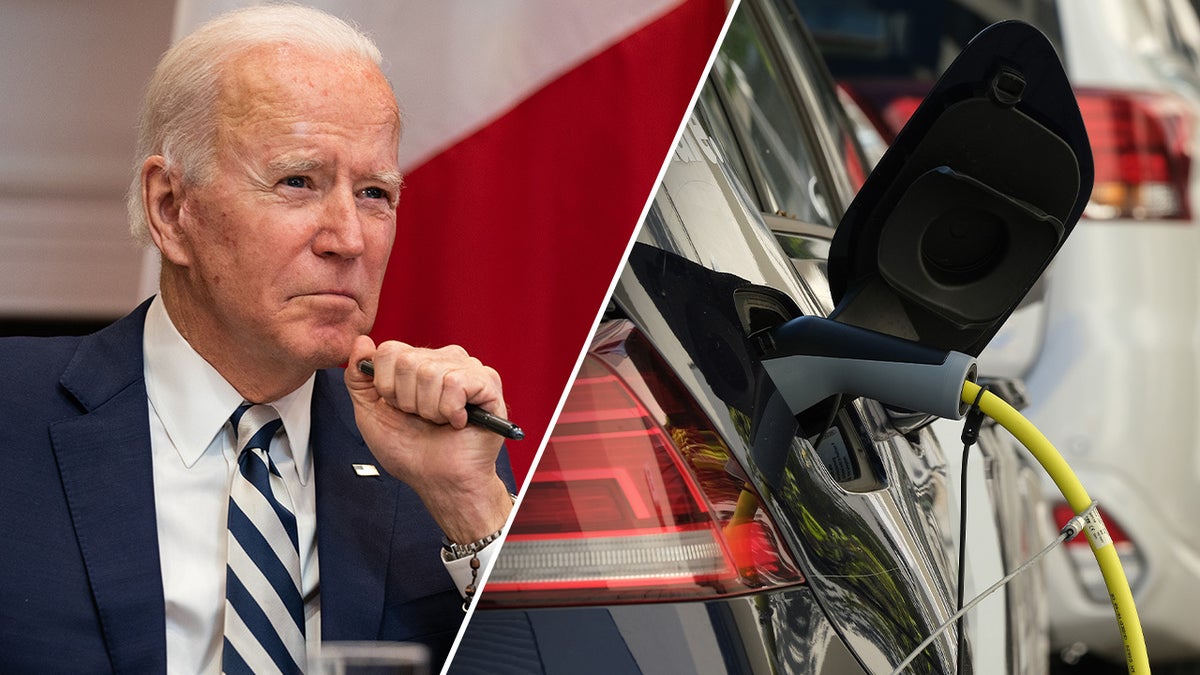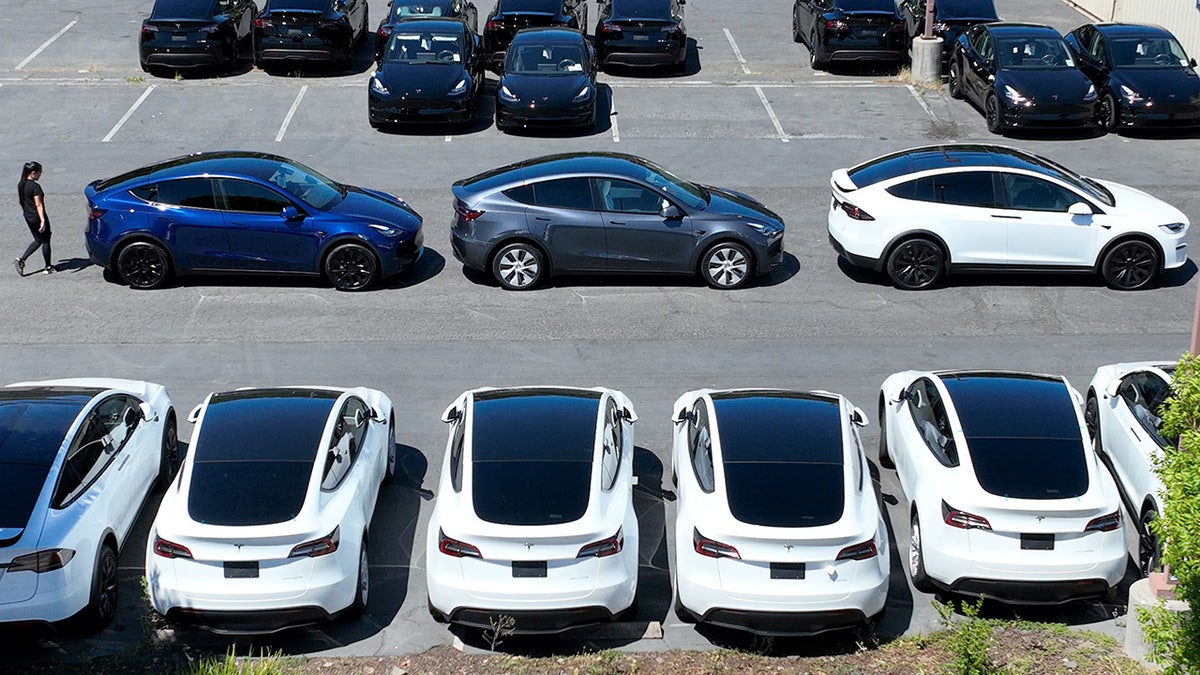Forbes: Electric vehicles mean fewer jobs for traditional autoworkers
Forbes Media Chairman Steve Forbes breaks down the economic impact from the United Auto Workers strike on "Special Report."
FIRST ON FOX: A sweeping first-of-its-kind analysis published by think tank Texas Public Policy Foundation (TPPF) concludes that electric vehicles (EV) would cost tens of thousands of dollars more if not for generous taxpayer-funded incentives.
According to the TPPF report — authored by energy experts Jason Isaac and Brent Bennett — the average model year 2021 EV would cost approximately $48,698 more to own over a 10-year period without the staggering $22 billion in taxpayer-funded handouts that the government provides to electric car manufacturers and owners. The analysis factors in federal fuel efficiency programs, electric grid strain, and direct state and federal subsidies.
"It is not an overstatement to say that the federal government is subsidizing EVs to a greater degree than even wind and solar electricity generation and embarking on an unprecedented endeavor to remake the entire American auto industry," the report states. "Despite these massive incentives, EVs are receiving a tepid response from the majority of Americans who cannot shoulder their higher cost."
"It’s time for federal and state governments to stop driving the American auto industry off an economic cliff and allow markets to drive further improvements in cost and efficiency," it continues.
BEIJING-BACKED GREEN ENERGY FIRM IS EXPANDING IN US, POSING SERIOUS NATIONAL SECURITY RISK: REPORT

President Biden previously set a goal of ensuring 50% of car purchases are electric by 2030. His administration has pursued aggressive regulations that target future gas-powered cars. (Anna Moneymaker / Pool / Getty Images / File | Sean Gallup / Getty Images / File)
The report determined that, thanks to a special multiplier that has existed for more than two decades, EVs receive roughly seven times more credits under federal fuel efficiency programs than they provide in actual fuel economy benefits. That figure, the total regulatory credits from federal and state fuel efficiency and greenhouse gas emissions standards, amounts to an average of $27,881 per vehicle for EV makers.
Further, the analysis calculated the socialized cost of EV charging stations' strain on the U.S. electric grid amounts to an average of $11,833 per EV over 10 years. Such costs are shouldered by utility ratepayers and taxpayers, many of whom may not own an EV.
HOUSE CCP PANEL PROBES BIDEN ADMIN OVER CHINESE GREEN ENERGY PROJECT ON US SOIL
And, finally, state governments and the federal government provide an average of $8,984 per EV over 10 years in direct taxpayer-funded subsidies.
"The stark reality for proponents of EVs and for the dreamers in the federal government, who are using fuel economy regulations to force manufacturers to produce ever more EVs, is that the true cost of an EV is in no way close to a comparable [internal combustion engine vehicle (ICEV)]," the report concludes.
"Without increased and sustained government favors, EVs will remain more expensive than ICEVs for many years to come," it states. "Hence why, even with these subsidies, EVs have been challenging for dealers to sell and why basic economic realities indicate that the Biden administration’s dream of achieving 100% EVs by 2040 will never become a reality."

Under California Gov. Gavin Newsom's leadership, California has issued an electric vehicle mandate that is set to go into effect in 2035. (Patrick T. Fallon / AFP via Getty Images / File)
The TPPF report, meanwhile, comes as lawmakers at the federal and state level continue to take aim at traditional gas-powered vehicles while boosting EVs. President Biden has set a goal of ensuring 50% of all car sales are zero-emissions by 2030 and his administration has pursued rigorous restrictions on gas-powered vehicles.
In December 2022, the Environmental Protection Agency (EPA) finalized rules, which targeted heavy-duty trucks, that it said at the time were the "strongest-ever national clean air standards to cut smog- and soot-forming emissions" from such vehicles. The new standards went into effect on March 27 and will be implemented for new trucks sold after 2027.
Then, in April, the EPA proposed the most aggressive federal tailpipe emissions rules on light- and medium-duty emissions ever crafted. If finalized and implemented, 67% of new sedan, crossover, SUV and light truck purchases, up to 50% of bus and garbage truck purchases, 35% of short-haul freight tractor purchases, and 25% of long-haul freight tractor purchases could be electric by 2032, the White House projected.

New Tesla cars sit in a parking lot at a showroom in Corte Madera, California, on June 27, 2022. (Getty Images)
Months later, in July, the Department of Transportation's National Highway Traffic Safety Administration issued its most aggressive fuel economy standards ever, an action critics say would increase consumer costs.
And last year, the EPA also reinstated California’s authority under the Clean Air Act to implement its own emission standards and electric vehicle sales mandates, allowing other states to also adopt California's rules. The state then approved regulations that mandated all car purchases in the state — which leads the country in annual car sales — be electric by 2035.
CLICK HERE TO GET THE FOX NEWS APP
"The Biden administration and leftist states such as California have pushed for widespread electrification in less than 20 years through government subsidies and coercive regulations, but the price you see in the lot is not the true cost of an electric vehicle," Isaac, one of the TPPF report's authors, told Fox News Digital.
"Electric vehicle owners have been the beneficiaries of regulatory credits, subsidies, and socialized infrastructure costs totaling nearly 50 thousand dollars per EV," he said. "These costs are borne by gasoline vehicle owners, taxpayers, and utility ratepayers, who are all paying a hefty price for someone else’s EV."





